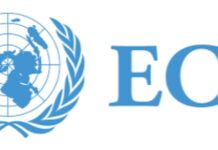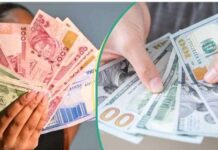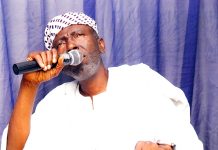From the streets of Lagos, to countless boardrooms, to catwalks all over the world, the Ankara fabric has proven to be so versatile that it is now recognized on the global fashion scene. A number of celebrities have been spotted in Ankara ensembles on red carpets globally. To many, the Ankara fabric has become a wardrobe staple which is endowed with traditional fabric system.
The fabric is used to make a growing number of fashion items; bags, shoes, dresses, jewellery and countless accessories. This development has led to a change in the general perception of the Ankara fabric worldwide.
According to the article Fashion Reborn: Blends of African outfits from Ankara, by fibre2fashion “Destiny of the ‘once before’ cheap Ankara fabrics, have undergone a magical transformation. Elegant creativity of the designers has made it a preferred choice of the rich and celebrities.” The African print fabric has metamorphosed from cultural attire to a glamorous wardrobe must-have and right now the spotlight is on Africa.
This Ankara trend has impacted the West African economy in a lot of ways and thus, the Nigerian economy. In the mid- 1980s, there were around 180 functional textile mills in Nigeria. The mills employed approximately a million people, this accounted for more than 60 percent of the textile industry capacity in West Africa, empowering millions of households across all geopolitical zones of Nigeria. This however changed shortly as the sector crashed into an industrial abyss. During this period, the number of textile companies dropped from about 180 to almost zero. This was revealed by an article on Nigeria’s textile economy titled: Nigeria’s Textile Industry on a Rebound?.
However, in recent times, the sector has rebounded. The number of functioning textile companies has risen once more to 25. While the industry may not be at its former place of glory, a steady incline can be noted in the growth of the industry which is largely due to the current global Ankara trend.
The rise in the demand of the fabric which was not too long ago considered to be a fabric for the poor or restricted to cultural festivities due to its brightly colored patterns and relative low cost, has led to a corresponding rise in the production of the material. Also, aside from the lower priced brands, a lot more textile factories have started producing the Ankara fabric in more appealing and sophisticated designs, which are today ground in Nigeria, the home of ANKARA.
Furthermore, due to the ready availability of Ankara in the local market, it has become the preferred choice of fabric when making custom designed outfits. What was once considered to be a local market has grown exponentially to meet the increasing demands for the fabric worldwide. African designers and their Ankara designs are now sought out in all the echelons of the global society. The Ankara fashion industry has proven to be a veritable goldmine in these ways and many more.
A lot of Ankara fashion shows spring up daily all over the global fashion scene. One of the more noteworthy ones is the annual Ankara Festival hosted yearly in Los Angeles, California. The festival or AFLA as it is commonly known was created in 2010 with the goal of increasing the visibility of African Culture through fashion, Arts, music, dance, and food. The festival aims to showcase Modern African Designs in African Print (Ankara), established by Africans inspired designers, young up and coming designers, providing them a venue to showcase their abilities, and develop their entrepreneurial ambition in the international fashion arena. Another notable development is the Ankara Invasion. This has been adopted as the collective name for the current global Ankara trend. Different items fashioned out of the Ankara fabric are now spotted in places where it was once viewed as unsuitable.
As Duro Olowu -a Nigerian fashion designer- said, “For a long time, there was a sense that this was limited to Africa but now it has become global. Combined with an awareness of social responsibility, it makes for a powerful statement.” Countless international designers have launched various new designs revolving around the Ankara fabric. Marc Jacobs, Givenchy, Eley Kishimoto, Jean Paul Gaultier, Diane Von Furstenberg, Gwen Stefani, Dries van Noten, Kenzo and Paul Smith among others have included items fashioned out of Ankara fabric in their recent collections.
A lot of renowned celebrities have also taken to this fashion trend. Beyoncé Knowles, Rihanna, Fergie and Kim Kardashian to name a few, have adopted the Ankara fabric and have been spotted in daring designs using one or more fabrics. The rise on the trend isn’t restricted to celebrities alone. A lot of foreigners who have seen the designs at work, on TV or even at school have joined the movement. It is not uncommon to find people wearing the fabric who may not even know the traditional name. The fabric is commonly referred to in these circles as “African Print”.
The overnight explosion of the use of Ankara fabric on the global fashion scene is perhaps one of the most notable fashion trends to have emerged from Africa over the last couple of years. The Ankara fabric is one that is very versatile and constantly evolving to meet today’s fashion fads. Hence, one may go as far as saying that the fabric and the trend have come to stay on the global fashion market.
































